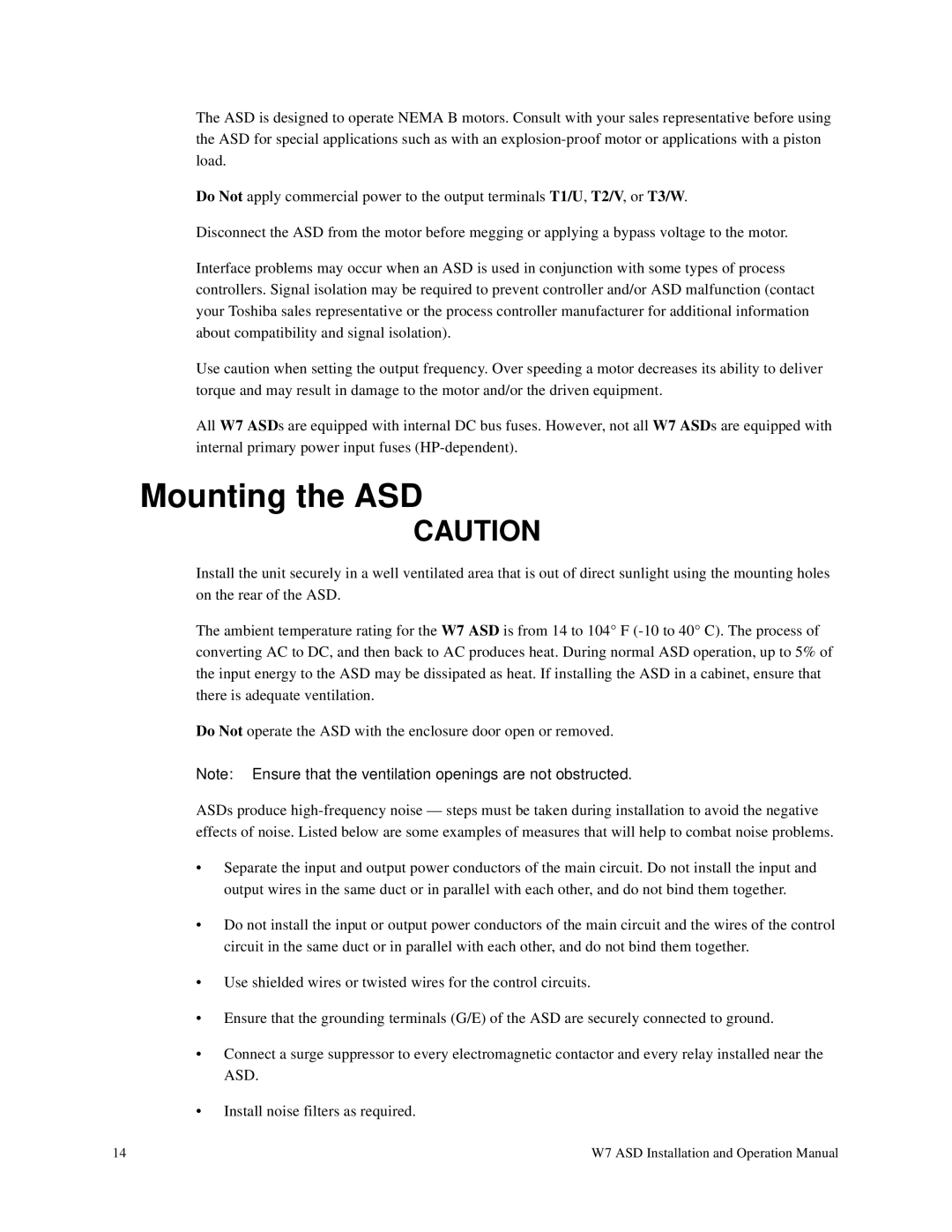The ASD is designed to operate NEMA B motors. Consult with your sales representative before using the ASD for special applications such as with an
Do Not apply commercial power to the output terminals T1/U, T2/V, or T3/W.
Disconnect the ASD from the motor before megging or applying a bypass voltage to the motor.
Interface problems may occur when an ASD is used in conjunction with some types of process controllers. Signal isolation may be required to prevent controller and/or ASD malfunction (contact your Toshiba sales representative or the process controller manufacturer for additional information about compatibility and signal isolation).
Use caution when setting the output frequency. Over speeding a motor decreases its ability to deliver torque and may result in damage to the motor and/or the driven equipment.
All W7 ASDs are equipped with internal DC bus fuses. However, not all W7 ASDs are equipped with internal primary power input fuses
Mounting the ASD
CAUTION
Install the unit securely in a well ventilated area that is out of direct sunlight using the mounting holes on the rear of the ASD.
The ambient temperature rating for the W7 ASD is from 14 to 104° F
Do Not operate the ASD with the enclosure door open or removed.
Note: Ensure that the ventilation openings are not obstructed.
ASDs produce
•Separate the input and output power conductors of the main circuit. Do not install the input and output wires in the same duct or in parallel with each other, and do not bind them together.
•Do not install the input or output power conductors of the main circuit and the wires of the control circuit in the same duct or in parallel with each other, and do not bind them together.
•Use shielded wires or twisted wires for the control circuits.
•Ensure that the grounding terminals (G/E) of the ASD are securely connected to ground.
•Connect a surge suppressor to every electromagnetic contactor and every relay installed near the ASD.
•Install noise filters as required.
14 | W7 ASD Installation and Operation Manual |
